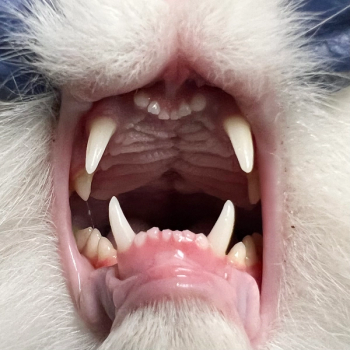
Just Ask the Expert: Am I using skin staples for wound closure correctly?
The primary advantage staples provide over sutures is rapid closure.
Dr. Swaim welcomes soft tissue surgery questions from veterinarians and veterinary technicians.
When I use surgical staples to close skin incisions, some staples often come out. Perhaps it is my technique or the products I use. Please comment on the usefulness of staples for routine skin closure in veterinary patients.
R. Wayne Randolph, VMD, DABVP
Countryside Veterinary Hospital
Flemington, N.J.
I have found surgical staples useful and effective in closing skin wounds. The primary advantage staples provide over sutures is rapid closure. This advantage has been a principal factor in my choosing skin staples to close many wounds that have required considerable surgical time in preparing tissues for closure, such as large wounds or skin grafts. Thus, a rapid final closure is beneficial.
Steven F. Swaim, DVM, MS
Some tips to help ensure secure staple closures are
1. Use appropriately sized staples. Staples are usually classified as regular or wide. Use your judgment as to which size is best based on the wound size, location, and type. For example, use wide staples on wounds on the trunk and regular staples for placing a skin graft on a distal limb.
2. Place a subcuticular or intradermal suture to appose or nearly appose wound edges to help avoid skin tension on the staples.
3. Apply the staples perpendicular to the wound edges and not at an angle.
4. Place equal portions of the staple on each side of the wound. Center the indicator at the dispensing port of the stapler over the wound before applying the staple.
5. Use thumb forceps to apply some tension to the long axis of the wound when applying the staple.
6. Apply moderate pressure on the applicator to help ensure the staple penetrates the skin properly. However, too much pressure could result in excessive skin inclusion and pressure injury of the enclosed skin, while insufficient pressure may lead to inadequate skin inclusion and the possibility of the staple's coming out. Clinical judgment is needed to apply the proper amount of pressure.
One disadvantage of staples is that they can turn within the skin, resulting in orientation of the staple points over the closed wound. And although the staples hold the wound together, they are difficult to remove with staple removers. They must be manipulated with a hemostat back into proper position (points down) so a staple remover can be applied.
Steven F. Swaim, DVM, MS
Professor Emeritus
Scott-Ritchey Research Center
Department of Clinical Sciences
College of Veterinary Medicine
Auburn University
Auburn, AL 36849
SUGGESTED READING
1. Hedlund CS. Surgery of the integumentary system. In Fossum TW, ed. Small animal surgery. 3rd ed. St. Louis, Mo: Mosby, Elsevier, 2007;159-259.
2. Swaim SF, Henderson RA. Small animal wound management. 2nd ed. Baltimore, Md: Williams and Wilkins, 1997;38-40.
3. Williams JM. Decision-making in wound closure. In: Williams J, Moores A, eds. BSAVA manual of canine and feline wound management and reconstruction. 2nd ed. Quedgeley, Gloucester, England: British Small Animal Veterinary Association, 2009;33.
Newsletter
From exam room tips to practice management insights, get trusted veterinary news delivered straight to your inbox—subscribe to dvm360.






